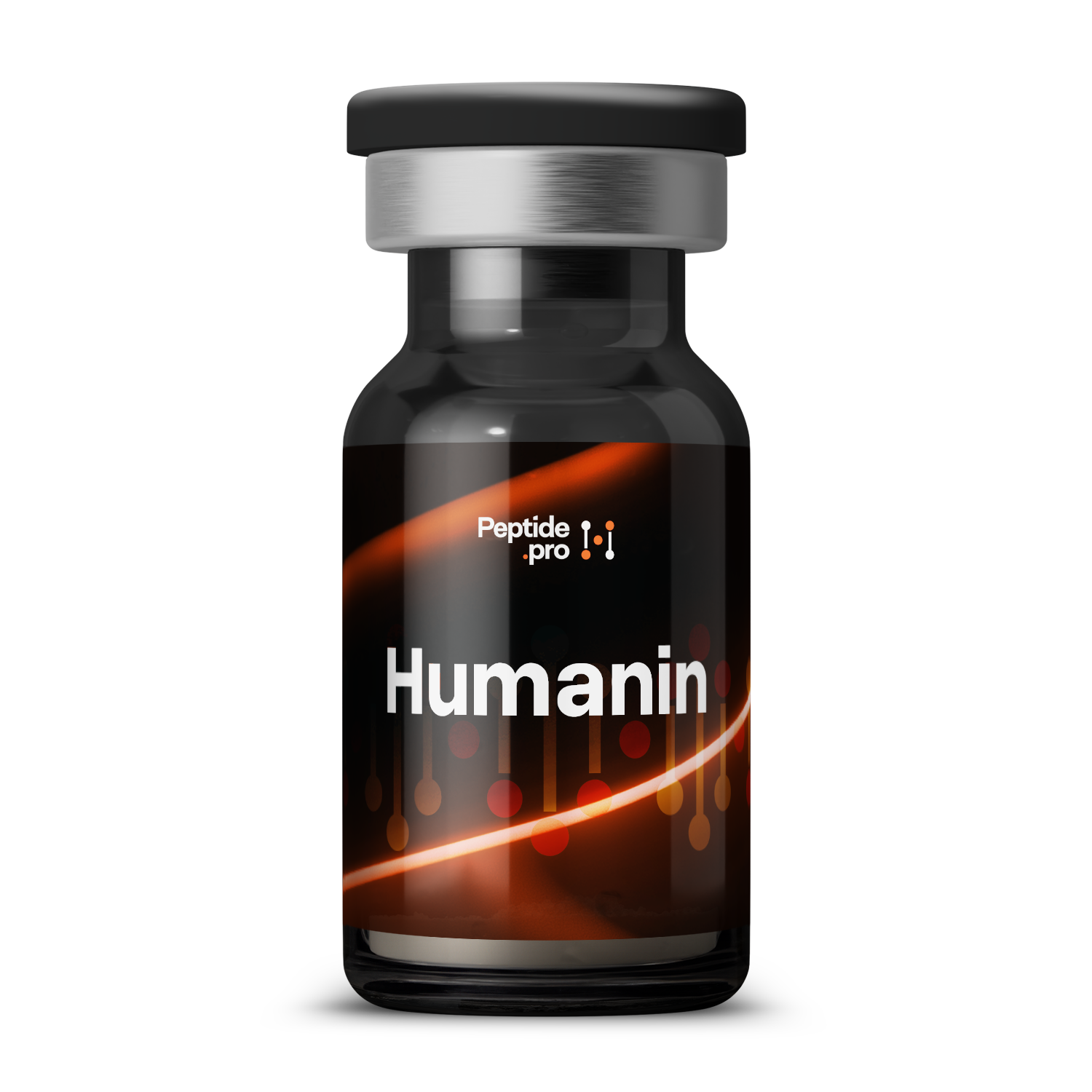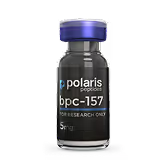Humanin
Humanin is a naturally occurring 24–amino-acid peptide from mitochondria that helps cells survive stress and supports brain and metabolic health. In research, it has shown promise for protecting neurons against damage and improving insulin sensitivity in human cell studies. It’s used in studies on aging, neuroprotection, and metabolic regulation.
Compound Overview
About the product
The peptide sequence of Humanin is Met-Ala-Pro-Arg-Gly-Phe-Ser-Cys-Leu-Leu-Leu-Leu-Thr-Ser-Glu-Ile-Ile-Ala-Asn-Leu-Ser-Leu-Pro-Lys-Arg. It contains a single cysteine residue critical for its activity and no non-natural amino acids. Humanin and its more stable analogs (e.g., HNG) are produced by Fmoc solid-phase peptide synthesis and purified by HPLC to ≥95 % purity. Mass spectrometry confirms correct sequence and molecular weight.
Humanin binds to cell-surface receptors including the formyl peptide receptor-like-1 and a trimeric receptor complex (CNTFR/WSX-1/gp130), activating pro-survival signaling pathways such as STAT3 and PI3K/Akt. It also interacts intracellularly with pro-apoptotic proteins (e.g., Bax) to prevent cell death. In plain terms, Humanin sends “stay alive” signals to stressed cells at both the membrane and inside the cell. These combined actions support cellular resistance to oxidative stress and metabolic insults.
The peptide has been evaluated primarily for its potential neuroprotective and metabolic-health benefits. In small human studies and ex vivo assays, Humanin analogs improved markers of insulin sensitivity and reduced inflammatory cytokine release. Measurements in subjects with age-related cognitive decline showed modest improvements in metabolic biomarkers and antioxidant status. Ongoing research is exploring its application in neurodegenerative disease and metabolic disorders.
Reported adverse events in early human investigations are minimal, with no serious safety signals to date. Transient mild injection-site discomfort has been noted with subcutaneous administration of Humanin analogs. No hormonal imbalances or systemic toxicities have been documented in trials lasting up to four weeks. Safety in pregnancy, lactation, and long-term use remains unestablished.
Humanin is synthesized by Fmoc solid-phase peptide synthesis, building the chain stepwise on a resin support. After cleavage, the crude peptide is purified by preparative HPLC to research-grade purity. Mass spectrometry and amino-acid analysis verify sequence integrity and concentration. Production follows peptide-compounding standards under good laboratory practices.
Humanin and its analogs are classified for research use only and lack approval by the U.S. FDA, EMA, and other major regulatory bodies for clinical application. They cannot be prescribed or marketed as therapies. Investigators may obtain them under investigational new-drug or equivalent research regulations. No commercial formulations are available.
Human clinical protocols have tested subcutaneous doses of 1–5 mg once daily for up to four weeks. Analog studies (e.g., HNG) used similar dosing regimens without serious adverse effects. No standardized dosing guidelines exist outside these small trials. All administration should follow institutional review–board–approved protocols.
- Do restrict use to IRB-approved research settings with medical oversight.
- Do monitor metabolic and inflammatory biomarkers during treatment.
- Don’t combine with other investigational peptides without justification.
- Don’t use during pregnancy, lactation, or active malignancy.
- Q: Does Humanin cross the blood–brain barrier?
- A: Preclinical data suggest it can, but human confirmation is limited.
- Q: How soon are benefits seen?
- A: Biomarker changes have appeared after 1–2 weeks of daily dosing.
- Q: Is oral administration possible?
- A: Only injectable forms have been evaluated in human studies.
For research use only. Not approved for medical use.


